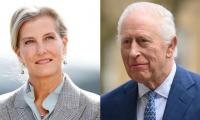Standing on the south lawn of the White House just days after 9/11, Bush told the nation – and the world – that “[t]his crusade, this war on terrorism is going to take awhile.”
Bush, evoking history’s most infamous religious war, perhaps out of clumsy oblivion to the connotation of his own words, perhaps as a dog whistle to the most reactionary elements of his base, laid out his vision for a global war, a war that had no boundaries, not even the borders of the United States. In the early post-9/11 period, Bush, who had been the first President since 1888 to fail to win a plurality of the popular vote, frequently resorted to particularly grandiose terms. Thus, it was, in some respects, oddly fitting for the man who spoke of “enemies of freedom” and the “axis of evil”, to refer to his global war on terrorism as a “crusade” against a “new kind of evil.”
Nearly a decade and a half later, the former crusader-in-chief, now fashions himself a painter. And he has found an odd and surprising new fan club amongst liberals. Liberals have sought to revive his image in order to turn him into an anti-Trump. We are told that Bush is everything Trump is not. Unlike Trump, he never embraced Islamophobia, respected the media and liberal constitutional norms and tolerated dissent.
But those looking to tout the good Bush as the opposite of the bad Trump seem to have forgotten – or are conveniently overlooking – the very real causalities of the former zealot of the death chamber and the black site.
Bush, while speaking of a new kind of evil, did incalculable amounts of damage.
Abroad, his crusade led him to launch two invasions, whose massive bombings of impoverished countries paralleled Guernica in their brutality, whose policies of occupation brought the neoliberal order full circle to the old blunt violence of colonial pillage.
At home, his crusade meant domestic dissent was tantamount to disloyalty; and that civil society could either be conscripted into the cause or treated as an enemy.
And somewhere in the space blended together, Bush’s crusade erected a regime of torture, detention, and disappearance.
To praise Bush now is to erase these victims, and all in the name of an impotent strategy. Trump’s success depends on his ability to convince his supporters that he isn’t like the George Bushes of the world. And by legitimizing Bush, we legitimize in part some of the worst potential policies of a Trump administration. To put it simply, it is difficult to lament Trump’s desire to bring back torture while praising as his foil the man who implemented the very regime of torture Trump wishes to resurrect.
Even before Bush was president, he had an almost super villain quality to him. As governor, Bush signed 131 death warrants, at the time a record. While Rick Perry would latter go onto outdo Bush’s ghastly record in total number of executions, Bush executed individuals at a faster rate. Analysis of these executions showed that most of those sent to death by Bush had “seriously flawed trials.” Bush denied the clemency petition of an individual with intellectual disabilities and even opposed legislation barring such a practice. The Supreme Court would later rule executing individuals with intellectual disabilities is cruel and unusual punishment.
After presiding over Texas’s machinery of death, Bush set his sites on the White House. Like Trump, he failed to gain a plurality of popular. Unlike Trump, unfounded claims of Russian hacking not withstanding, there are serious allegations of fraud and outright theft of the election. An intervention by the Supreme Court ended recount efforts in Florida.
Needless to say, not everyone was pleased by the failure to properly count the votes in Florida. When he arrived in Washington, DC for his inauguration, he was greeted by a mass of protesters who hold “Hail to the Thief” signs and pelted his motorcade with eggs.
While any US President (or any leader in the capitalist world) would have exploited a tragedy like 9/11 for a consolidation of power, Bush’s actions in its aftermath go far beyond the pale of what anyone could imagine. Bush subsequently invaded Afghanistan, but sought and received a Congressional authorization for the use of military force (AUMF) that never mentioned the country by name.
This is because instead of arguing for military force against a single national, Bush proclaimed a global war, a war in which every corner, of every country is a battlefield.
The ramifications of this are profound. To date, between both Bush and Obama the authorization for military force in question, which is still in effect, has been cited 37 times to justify military actions in 14 countries.
The AUMF was used by the Bush administration to argue that it could detain José Padilla, a US citizen arrested on US soil, indefinitely without trial as an enemy combatant – after all the whole world, including the US, was a battlefield. The US government charged Padilla to avoid a Supreme Court ruling on whether the AUMF granted such powers.
How did we get to a point in time when such a revisionist view of Bush can triumph? Bush can thank, in part, Obama for his rehabilitation. Obama as president embraced and expanded the worst aspects of Bush’s global war. Although he had earlier stated the AUMF should be repealed, Obama would cite it 19 times, compared to Bush’s 18, to justify foreign military action. He would also seek statutory codifications of the President’s right to detain individuals indefinitely. And while Bush claimed the right to detain without trial, Obama claimed the right to kill without trial, including US citizens, as evidenced by his global program of extrajudicial executions via drones. And media revelations from the Bush era about NSA spying paled in comparison to the Snowden revelations. In short, Obama helped to normalize some of the worst aspects of the Bush Administration, which is why it is now easy to paint Bush as reasonable or respectable.
Painting Bush as respectable or reasonable means painting torture as respectable or reasonable. It means accepting a decision that resulted in hundred of thousands, if not a million, deaths as a just another policy choice. It requires us to accept detaining and disappearing individuals as policy option about which reasonable people can agree to disagree.
This may be convenient, as it allows us to let Obama off the hook for continuing some of Bush’s worst policies and not ask serious question about the way Bill Clinton paved the way for them. When you are deeply committed to the functioning of the system for something to be undesirable it must be a deviance from it, not because of it. Thus, for Trump to truly be bad he must represent a break from his predecessors.
Trump very well may turn out to be worse than Bush. The brashness of his blatant hatred for Muslims and his affiliations with unreconstructed white supremacist go far beyond Bush. Resisting him is an urgent priority for the left and a situation of basic survival for those communities under siege. But none of this erases the fact that Bush viewed his critics as enemies of freedom, attempted to criminalize swaths of Muslim civil society, launched, brutal, protracted wars, and oversaw authoritarian policies of surveillance, torture, and dissent. With these tools alone Trump could do immense damage. Equally important, Trump can’t be resisted with also resisting the system that produced him. That means a break with Bush’s abhorrent crusade.
This article has been excerpted from: ‘Crusader-in-Chief: the Strange
Rehabilitation of George W. Bush’.
Courtesy: Counterpunch.org
This demand has fueled rapid growth deposit base of Islamic Banks and Islamic Windows operated by conventional banks
But Punjab Agriculture Food and Drug Authority building near Thokar Niazbeg on Multan Road stands out
Macron has been particularly vocal in their criticism, asserting that withholding arms from Kyiv plays directly into...
As PPP governs province, Bilawal Bhutto Zardari holds strategic position to address both violence and its underlying...
Critics argue that strategy is vague, but closer look indicates strategic alignment with global trends and national...
To defeat it, we must distrust bot-driven narratives, to defeat it, we must verify sources before believing or sharing







